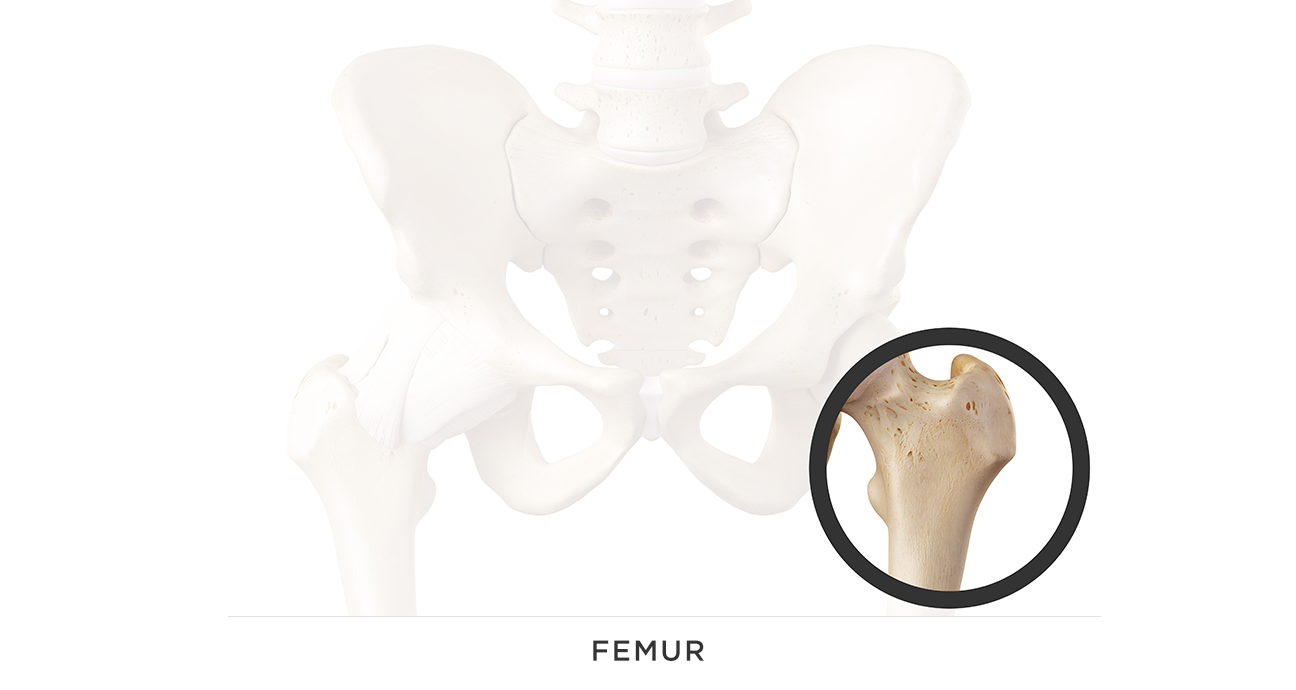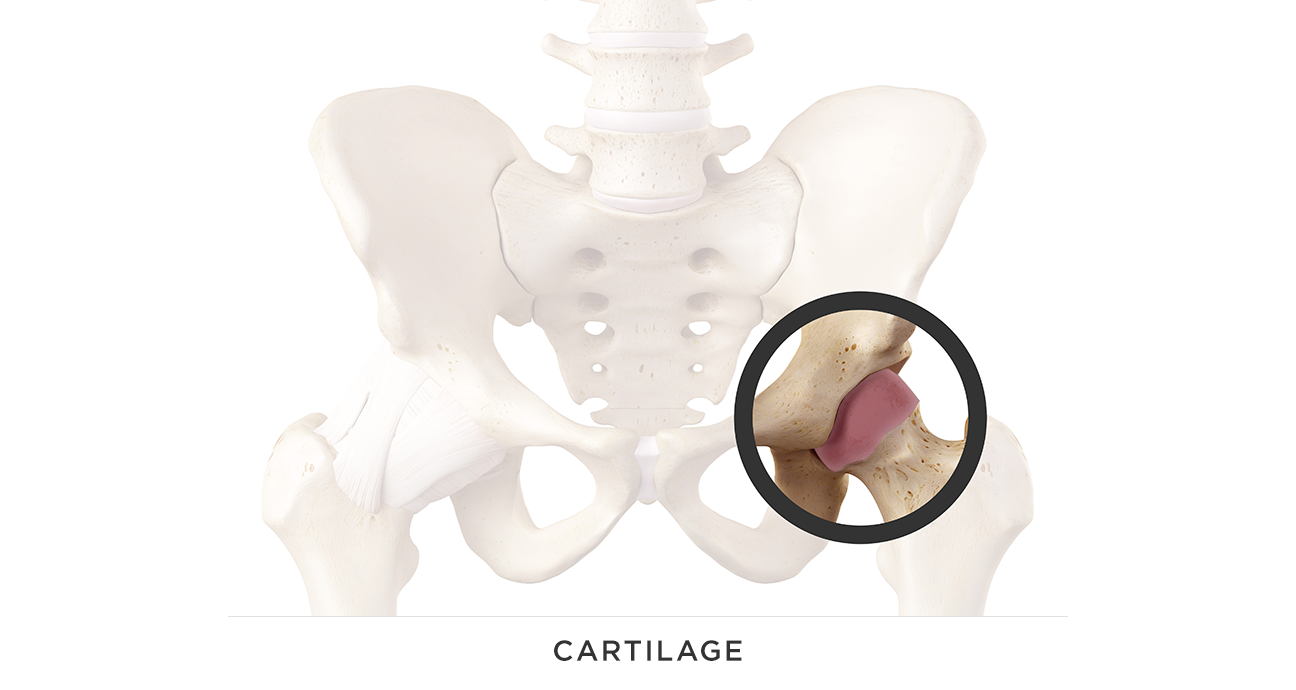How the hip works.
The hip is the largest ball-and-socket joint in your body. The “ball,” or femoral head, is the rounded end of your femur. The “socket” is a cavity on the lower side of your pelvis known as the acetabulum. The femoral head fits into the acetabulum to form your hip joint. Bands of tissue, known as ligaments, connect the ball and socket and hold the hip joint together. A layer of cartilage between the femoral head and acetabulum helps to prevent friction and allows for the “ball” to rotate easily within the socket.




Why does my hip hurt?
Arthritis is the most common cause of hip pain and reason for total joint replacement. The three most common types of arthritis are:
Osteoarthritis
Osteoarthritis is the wearing down of the cartilage on the joint surface causing pain and stiffness.
Rheumatoid Arthritis
Rheumatoid Arthritis is an autoimmune disease that causes chronic joint inflammation that often leads to damage to the joint surfaces.
Post-traumatic Arthritis
Post-traumatic Arthritis results from damage to the joint from a previous injury. Over time, this can result in wearing out of the joint cartilage.
Potential other issues that may be causing your hip pain:
- Muscle or tendon strain
- Tendinitis
- Bursitis
- Hip Fracture
Healthy Hip, left / Damaged Hip, right


